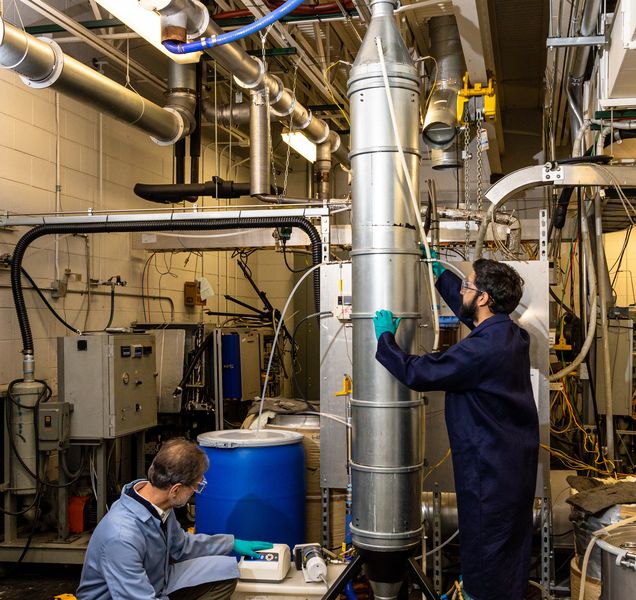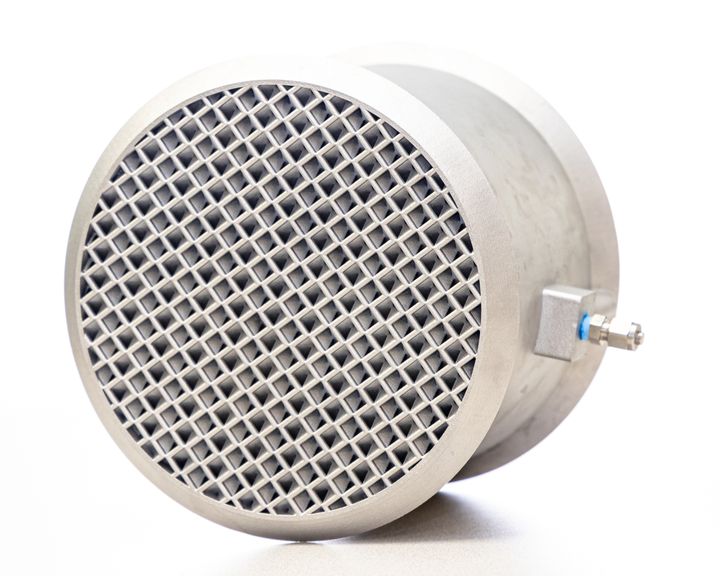
A test device made by the Oak Ridge National Lab has developed a prototype device that can more efficiently capture CO2.
Carbon capture is one of several technologies that attempt to address the global carbon problem. With too much CO2 in the atmosphere, the best plan is to simply not produce any more in the first place. Unfortunately in many areas that does not seem to be practical, and other approaches may be desired.
One approach is carbon capture, in which raw exhaust from a source, such as a power plant, is fed through a filtration device that can extract some portion of the CO2 as it passes by.
Typically this is accomplished with the use of solvents, but the chemical reaction that takes place generates some heat. The accumulated heat eventually creates a limit on the amount of CO2 that can be captured.
The researchers at ORNL thought one way to approach the problem would be to somehow build a heat exchanger directly into this process. However, that’s impossible.
3D Printed Heat Exchanger

Or so it was thought until it was realized that a complex aluminum component that integrates both the functionality of the carbon capture AND a heat exchanger could be made with additive manufacturing.
This part includes tiny channels that carry coolant to maintain reasonable temperatures during operations, and thus can allow additional chemical reactions occur that capture even more CO2.
Of course, not all the CO2 is captured; this approach simply reduces the amount, and as said before, the best approach would be to not produce the CO2 in the first place. This 3D printed device will simply increase the efficiency.
ORNL says the device can capture up to 20% of the passing CO2 in optimum conditions, but more typically will be around 15%. In a large power plant, that could represent a significant amount of CO2, even though the capture percentage is relatively small.
Apparently the researchers feel that the same kind of device could be 3D printed in other materials, including high-temperature polymers. Evidently the temperature is sufficiently lowered by the approach to allow the use of these materials. That could make for lighter parts and perhaps larger-scale CO2 capture devices.
ORNL explains:
“Embedded coolant channels were added inside the packing element’s corrugated sheets to allow for heat exchange capabilities. The final prototype measured 20.3 centimeters in diameter, 14.6 centimeters in height, with a total fluid volume capacity of 0.6 liters. Aluminum was chosen as the initial material for the intensified device because of its excellent printability, high thermal conductivity, and structural strength.”
The moral of the story here is that AM techniques can indeed solve previously impossible problems. In this case the ORNL researchers were able to think beyond normal solutions and come up with a a hybrid device that actually worked.
This begs the question: what impossible problems are you facing? Have you really considered all the possible ways to solve it?
Sometimes it takes a blank sheet of paper and some seemingly impossible requirements combined together to stimulate an entirely new concept. It’s hard to conceive of new solutions when we are burdened by the baggage of old-style making. Sometimes we have to free ourselves from that prison and use magic to come up with new concepts.
And that magic could be 3D printing.
Via ORNL
